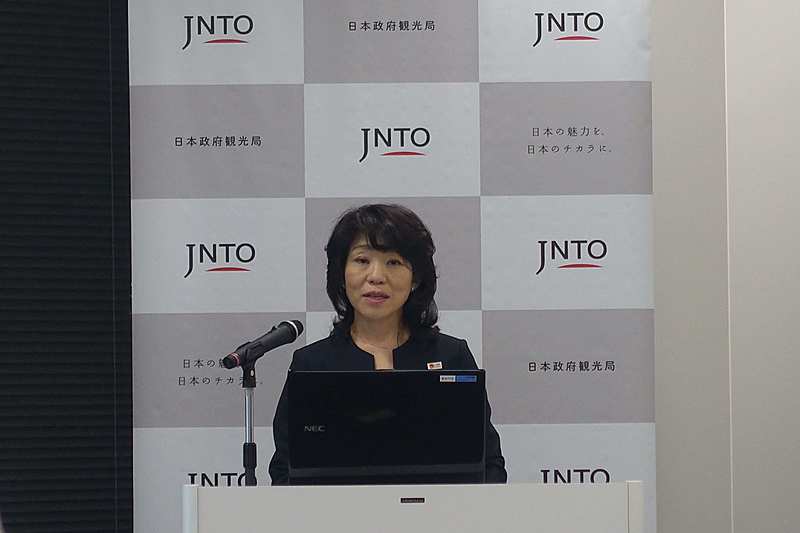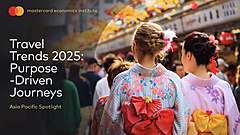
International visitors to Japan in June 2023 exceeded 2 million for the first time since the pandemic happened, and 10 million inbound travelers had already visited Japan for the first half of 2023. In comparison with 2019, the fastest market recoveries were seen in U.S. and Australia, and visitors from Europe and Middle East have soared. Visitors from East Asia (except China) recovered to the 90% level of 2019.
Rieko Nakayama, Executive Vice President at Japan National Tourism Organization (JNTO), said at a press briefing, “Inbound traveler recovery is seen in Tokyo first, but it is behind in local areas.” One of the reasons is fewer visitors from East Asia, which was the biggest market for local areas before the pandemic. She, however, said “When direct flights from East Asia to local cities revive, international guest nights in local areas will increase.”
According to JNTO data, there were many source markets that recovery of visitors outnumbered recovery of direct flights, In the summer of 2023, international flights were back to about 60% of 2019 as a whole, but complete recovery was not seen yet partially because of slow recovery of outbound travel from Japan.
Spending in Japan by international visitors totaled 1.2 trillion JPY for three months from April to June 2023, 95.1% of the same period of 2019, and spending per traveler was estimated at 205,000 JPY, which already reached a governmental goal of 200,000 JPY per traveler. Nakayama, however, recognized that it may reduce as a whole, as mass tourism is getting back,
 Nakayama talked about the current inbound market situation.
Nakayama talked about the current inbound market situation.
Three pillars of JNTO Inbound Marketing Strategy
Nakayama also explained ‘JNTO Inbound Marketing Strategy,’ which was announced in June this year. Based on the government’s Tourism Nation Promotion Basic Plan, JNTO is taking actions in an individual source market strategy, a market-cross marketing strategy and a MICR marketing strategy in order to realize sustainable tourism, spending expansion and more travelers to local areas.
For an individual source market strategy, Nakayama said that JNTO is developing more detailed promotions by target traveler in a source market, appealing different tourism contents in accordance with spending amount, possibility to stay in local areas or the number of travelers.
For a market-cross marketing strategy, JNTO is particularly focusing on Adventure Travel (AT) because Adventure Travel World Summit 2023 (ATWS2023) is held in Hokkaido in September this year. JNTO plans to set ‘Japan Lounge’ in the ATWS venue to deliver AT contents information to participants from the world. JNTO recognizes ATWS as a great opportunity to appeal Japan’s AT contents, which are expected to attract high-spending travelers.
In addition, JNTO will become a hub function for Japanese suppliers to strengthen sales and information delivery of high-value travels. As one of the current challenge in this space is that almost 70% of high-value travelers concentrate on Tokyo, Osaka and Kyoto, JNTO is trying to decentralize high-value guests to local areas.
JNTO recognizes Osaka Kansai EXPO 2025 as an opportunity to encourage international visitors to travel in local areas, targeting China and Taiwan or former EXPO host countries, such as U.S., Italy, Germany or Middle East.





